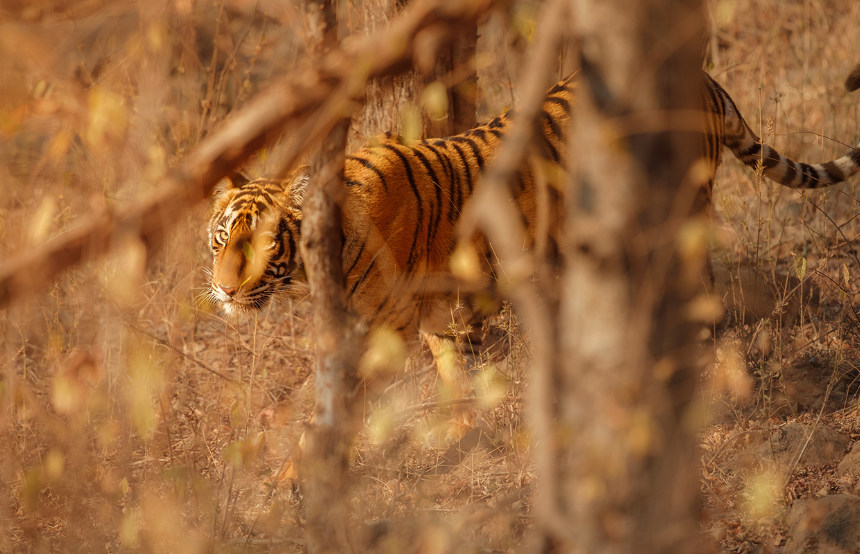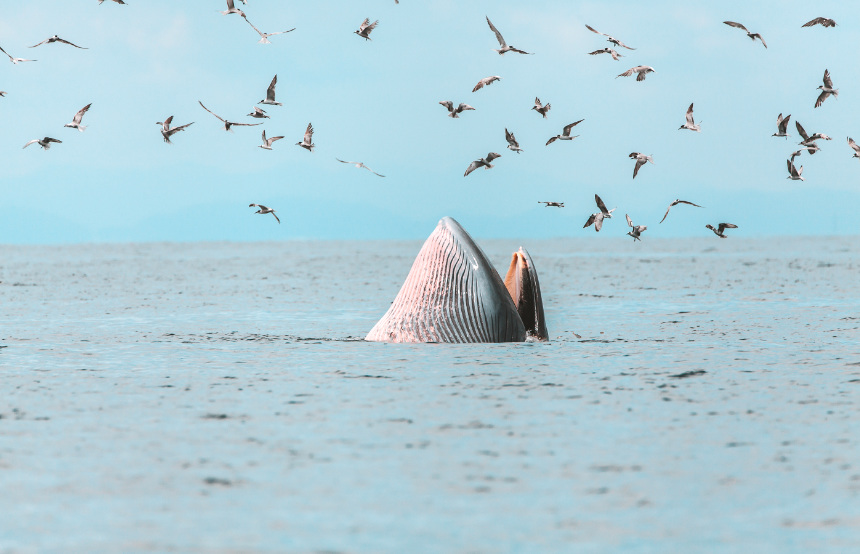Published 28th Jun. 2021
Reading time
The name for these tropical seabirds comes from the Spanish slang word 'bobo', meaning foolish or stupid, in reference to the clumsy way they walk around on land. Boobies are most commonly found on the Galapagos Islands, but can also be spotted all over the Pacific region.
There are six different species of booby: red-footed, blue-footed, brown, Nazca, masked and Peruvian. The most common, and most recognisable, are the blue-footed and red-footed boobies, which are found all over the Galapagos Islands. As the name suggests, they both have brightly coloured feet, and for blue-footed boobies, the bluer the feet, the more enticing males appear to females. Their blue feet are part of their elaborate mating ritual, as they flaunt their feet one at a time in front of the female.
Boobies are known for having somewhat elaborate courtship rituals. One, which is known as 'sky pointing', involves the male raising his wings and head and emitting a long, continuous whistle. This is paired with what looks like a sort of dance, as he raises his feet alternately several times (which appears even more impressive when performed by blue- and red-footed boobies). Once this display is over, boobies tend to mate for life and only rarely move on to a new partner.
A rather more unpleasant trait boobies possess is the tendency for 'siblicide', where one hatchling will directly or indirectly cause the death of a sibling. This is most common, and most brutal, among Nazca boobies, who always lay two eggs a few days apart, and the older chick pushes the younger chick out of the nest. It is believed this is some sort of natural insurance policy, in case the first chick doesn't survive. But if the first one does survive, the second one has almost no chance of survival.
Boobies do not tend to fear humans, which means historically they've very easily been captured and eaten by sailors. They would spot a ship and see it as a good place to land while out at sea, and probably soon regret it as they ended up as dinner. In the Galapagos Islands, boobies often make their nests right in the middle of footpaths and so can get trampled on by tourists.
If you're in the Galapagos Island, you will almost definitely see red-footed, blue-footed and Nazca boobies, as they are found all over the islands. But boobies can also be found all over the western tropics, including the Peruvian mainland.
In the Galapagos you can often walk straight past the nests of blue-footed boobies as they make them right on the footpaths.
Practical advice and inspiration for your next trip

Searching for the best safaris in India? We’ve got you covered. Whether you’re keen to track tigers in Madhya Pradesh, admire Asiatic lions in Gujarat or photograph forest eagle owls in Kerala, your India holiday awaits. While Bengal tigers steal the limelight in Bandhavgarh National Park, don’t forget about the shaggy sloth bears (though they’re not as cuddly as they look). Feeling up for the adventure?
15th September 2025 - India Safari & Wildlife

With their sleek, tangerine-tinged coats, piercing eyes and commanding presence, nothing beats the thrill of seeing a tiger in the wild. And where better than in India, home to the largest population on Earth? But when it comes to the best time to see tigers in India, it all depends on what you want from your trip. Whether you’d rather vivid green landscapes or crowd-free safaris, we’ve got the insider intel on when to see India’s famous big cats.
23rd June 2025 - India Safari & Wildlife

Where are the best places for whale watching? We’re glad you asked. From the picturesque Icelandic town of Husavik to the coastal haven of Mirissa in Sri Lanka, there are plenty of destinations to marvel at these majestic creatures. Picture this: the air is still and all you can hear is the creaking of the catamaran and the odd, excited whisper. You scan the horizon, desperate to spot the tip of a fluke or a distant plume of whale breath.
16th June 2025 - Safari & Wildlife

Our team of destination experts will get to know you and your unique requirements for your holiday

We work with you to build an ultra-personalised holiday itinerary with your choice of accommodation, experiences and activities

All of our holidays include little extras designed to make a big difference to your trip, from fast-tracking you through airport check-in and security to our network of local Concierges